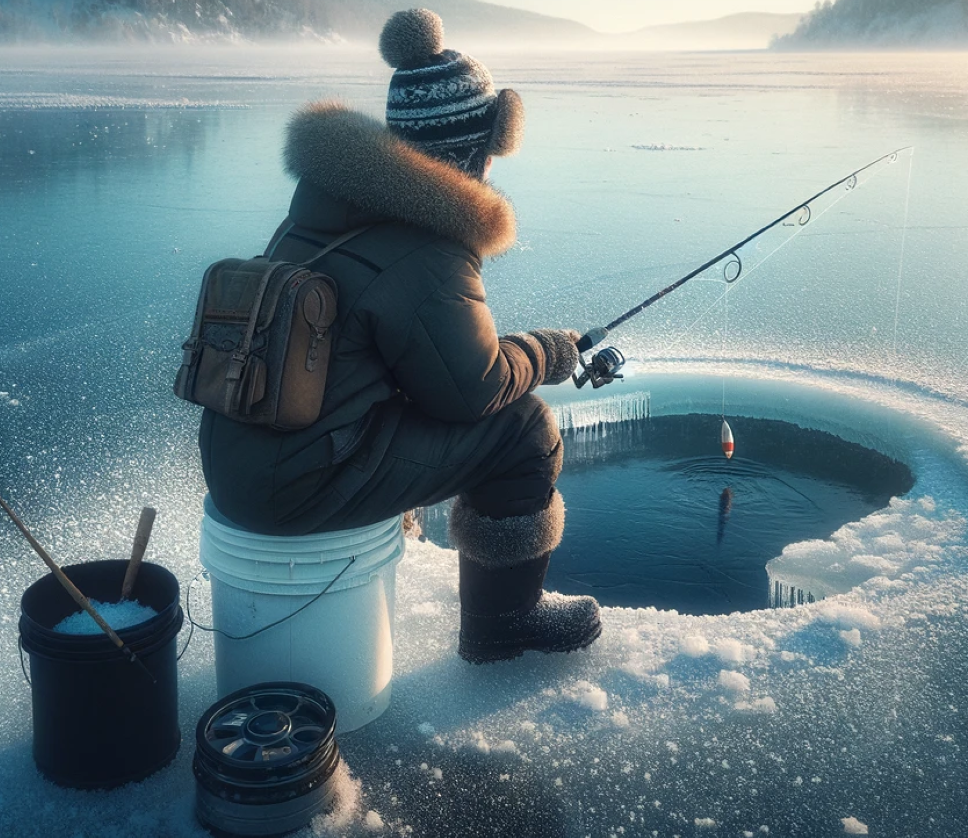Ice Fishing Spoons Guide
Ice fishing spoons are indispensable tools for anglers braving the cold to catch fish beneath the ice. This guide will delve into the types of ice fishing spoons, their applications, and tips for selecting and using them effectively to increase your catch rate.
Key Fishing Spoons from Stickylures.ca
|
Spoon Type |
Image |
Description |
|
Wave Fishing Spoon "Gaspy" 3" |
|
High-quality 3'' casting spoon with realistic alewife design, UV protection. |
|
Smelty Hammered Casting Spoon 1/4oz |
|
1/4 oz hammered fishing spoon with smelt fish design, glow-in-the-dark eyes, UV-protected, water-resistant, for brook trout, lake trout, and smallmouth bass. |
|
"Tigry" Fishing Spoon 3 1/2" |
|
3.5" casting spoon with realistic fish design, sticker, UV protection. |
|
"Perchie" Fishing Spoon 3 1/2" |
|
3.5" casting spoon with lifelike fish design, UV protection. |
Why Use Ice Fishing Spoon?
Ice fishing spoons are designed to sink quickly and imitate the erratic movement of injured baitfish, making them irresistible to predatory fish such as walleye, northern pike, and trout. Their effectiveness under the ice makes them a must-have for any serious ice angler.
Ice fishing spoons are favored for their:
- Versatility for Different Species: Suitable for a wide range of fish including walleye, trout, perch, and pike, thanks to various sizes, shapes, and colors.
- Attractive Action: Mimic wounded baitfish with erratic, fluttering movements and vibrant flashes, triggering predatory instincts in fish.
- High Visibility: Bright, reflective finishes and glow-in-the-dark features enhance lure visibility under ice, attracting fish in low-light and stained water.
- Ease of Use: Simple jigging technique suitable for all skill levels, involving dropping the spoon to the desired depth followed by a series of lifts and falls.
- Durability: Made from metal, spoons are long-lasting and can endure harsh ice fishing conditions and resist damage from fish and ice.
- Deep Water Effectiveness: Compact and dense design allows for quick sinking, reaching deeper waters where fish may be located.
- Customizable Presentation: Anglers can adjust jigging techniques, line length, or add bait to the hook for a tailored approach, matching the day's conditions and fish behavior.
Types of Ice Fishing Spoons
Ice fishing spoons are a critical component in the arsenal of winter anglers, offering a diverse range of options to target fish under the ice. These specialized lures are designed to mimic various prey and attract fish through different mechanisms, from visual appeal to auditory cues. Here's a closer look at some of the most popular types of ice fishing spoons and how they can enhance your ice fishing experience:
How to Use Ice Fishing Spoons
Using an ice fishing spoon effectively involves mastering various jigging techniques and understanding how to entice fish under the ice. Here are some techniques to consider:
- Lift and Drop: Mimics injured baitfish with smooth rod lifts and drops.
- Fluttering Fall: Lets the spoon flutter and spiral on slack line, imitating a dying fish.
- Pounding the Bottom: Stirs up sediment by tapping the spoon against the lakebed, attracting predators.
- Vibrating Action: Creates in-place vibrations with slight, rapid rod movements, effective for attracting curious fish.
- Dead Sticking: Involves holding the spoon still in the water to entice inspecting fish, especially after jigging.
- Yo-Yo Technique: Uses exaggerated up-and-down jigs to create a 'yo-yo' effect, suitable for deeper water.
- Double Lift: Combines a quick lift with a slower, higher lift to change spoon action and speed, triggering strikes.
- Short Twitches: Employs quick, small twitches for a subtle, erratic action, ideal for clear water or finicky fish.
Selecting the Right Spoon
To select the right ice fishing spoon, consider the following:
- Identify Target Species: Choose a size and style that matches the feeding habits of your intended catch.
- Match Local Forage: Pick spoons that resemble the size, shape, and color of the local baitfish or insects.
- Consider Water Clarity: Use bright or glowing spoons in murky water and more natural, subdued colors in clear water.
- Assess Light Conditions: Opt for glow-in-the-dark or reflective spoons in low-light conditions or under thick ice.
- Determine Water Depth: Select heavier spoons for deeper water to reach the desired depth quickly.
- Evaluate Fish Activity: Choose a spoon based on whether the fish are aggressive or lethargic (larger, more active spoons for aggressive fish, smaller, subtler spoons for passive fish).
- Check for Vegetation: In weedy areas, consider weedless spoons to avoid snags.
- Experiment with Action: Have a variety of spoon actions available, from jigging to fluttering, to match the day's fishing conditions.
- Personal Preference: Use spoons you have confidence in, based on previous successes.
Tips for Successful Ice Fishing with Spoons
For effective ice fishing with spoons, consider these essential tips:
- Vary Jigging Actions: Experiment with different jigging speeds and amplitudes—from subtle twitches to more aggressive jigs—to entice bites.
- Use the Right Equipment: Pair your spoon with a sensitive rod and a suitable line to detect light bites and maintain proper lure action.
- Pay Attention to Light Conditions: Choose spoons with glow or reflective properties for low-light conditions to increase visibility and attract more fish.
- Keep Hooks Sharp: Regularly check and maintain the sharpness of your hooks to ensure effective hooksets when fish strike.
- Stay Mobile: If you're not finding fish or getting bites in one location, don't hesitate to move and try different spots on the ice.
FAQ and Conclusion
Q1: Can ice fishing spoons be used for all types of fish? A1: While ice fishing spoons are versatile and can target a wide range of species, selecting the appropriate size, shape, and color based on the specific species you're targeting will yield the best results.
Q2: How do I know which spoon size to use? A2: The size of the spoon should match the size of the baitfish in the area. Larger spoons are typically used for predatory species like pike and lake trout, while smaller spoons are better for panfish, perch, and walleye.
Q3: Are glow spoons only effective at night? A3: Glow spoons can be effective both at night and during the day, especially in low-light conditions or when fishing in deeper or murkier waters where light penetration is minimal.
Q4: How often should I change my jigging technique? A4: If you're not getting bites, it's a good idea to vary your jigging technique every few minutes. Try different speeds, amplitudes, and pauses until you find what works.
Q5: Do I need special gear for ice fishing with spoons? A5: While you don't need specialized gear, a sensitive rod and a reel with a smooth drag system can enhance your ability to detect bites and manage the fight with the fish.
In conclusion, ice fishing spoons are a versatile and effective tool for catching predatory fish under the ice. Understanding the different types of spoons, how to use them, and selecting the right spoon for your fishing conditions will greatly enhance your ice fishing success. Remember to stay safe on the ice and happy fishing!
For more information on ice fishing spoons and to view a wide selection, visit Stickylures.ca.




